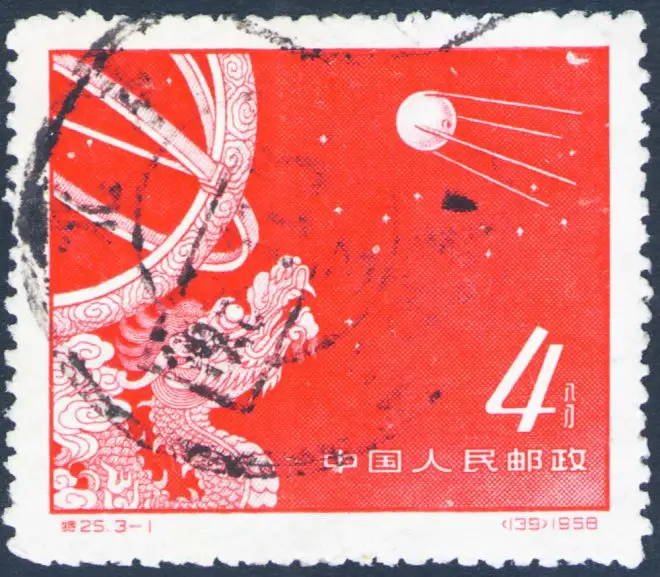
With most of us communicating electronically these days, receiving a handwritten letter has become even more special. However, sending a letter overseas, especially to a country where a different language is spoken, can be daunting. Luckily, several US-based postal companies are working hard to make shipping to China as easy and inexpensive as possible.
This article outlines the best carriers for shipments to China, unique shipping requirements, and the required postage to China for standard postcards, envelopes, and parcels.
Contents
Best Carriers for Mail to China
The United States Postal Service (USPS), Federal Express (FedEx), the United Parcel Service (UPS), and DHL all ship to China.
For envelopes and light parcels, USPS is typically the most affordable carrier. Packages shipped with USPS are delivered to customs offices in China, where they are transferred to China Post for delivery.
However, while USPS is usually the cheapest option, it is not necessarily the most efficient. UPS and FedEx are the quickest options for shipping packages to China. Both carriers guarantee delivery in 3-5 business days if you are willing to pay for expedited shipping. And, unlike USPS, UPS and FedEx do not transfer their parcels to China Post, which means you can track your parcel all the way to its destination.
DHL also offers competitive timeframes for shipments to China and tends to be slightly more affordable than UPS or FedEx. Therefore, if you’re looking for a middle ground between budget and speed, DHL can be a great resource.
Given that USPS is typically the most affordable option, the rates in this article reflect USPS postage to China prices unless otherwise specified.
Postage to Send Postcards to China
Postcards can be shipped via USPS using international postage rates. To send a postcard to China, you will need $1.30 in postage, which can be covered with one Global First-Class Forever Stamp ($1.30) or three First-Class Forever Stamps ($1.74).
USPS defines postcards as rectangular cards that have dimensions between 3.5 x 5.0 x 0.007 inches and 4.25 x 6.0 x 0.016 inches. Cards outside of these dimensions (or are not rectangular) require additional postage.
Postage to Send Standard Envelopes to China
Envelopes can be sent to China using international postage rates with USPS. To ship an envelope weighing less than one ounce to China, you need $1.30 in postage. You can use one Global First-Class Forever stamp ($1.30) or three domestic First-Class Forever Stamps ($1.74).
If your envelope weighs more than one ounce, you will need an additional $1.13 in postage for every extra ounce.
USPS defines standard envelopes as envelopes that have dimensions between 3.5 x 5.0 x 0.25 inches and 6.125 x 11.5 x 0.25 inches. If your envelope is rigid or not rectangular, it will be considered non-machinable, meaning that it will need to be hand-sorted. Non-machinable envelopes require an additional $0.21 in postage.
Postage to Send Large Envelopes to China
Large envelopes can be sent to China using international postage rates with USPS. USPS considers large envelopes to have dimensions between 6.125 x 11.5 x 0.25 inches and 12 x 15 x 0.75 inches.
The postage required to mail large envelopes is dependent on the weight of your envelope:
| Weight | Postage Required | Stamps Required |
| 1.0 ounce | $2.60 | 2 Global Forever Stamps ($2.60) or 5 First-Class Forever Stamps ($2.90) |
| 2.0 ounces | $3.67 | 3 Global Forever Stamp ($3.90) or 7 First-Class Forever Stamps ($4.06) |
| 3.0 ounces | $4.73 | 4 Global Forever Stamp ($5.20) or 9 First-Class Forever Stamps ($5.22) |
| 4.0 ounces | $5.81 | 5 Global Forever Stamp ($6.50) or 11 First-Class Forever Stamps ($6.38) |
| 5.0 ounces | $6.87 | 6 Global Forever Stamp ($7.80) or 12 First-Class Forever Stamps ($6.96) |
| 6.0 ounces | $7.93 | 7 Global Forever Stamp ($9.10) or 14 First-Class Forever Stamps ($8.12) |
| 7.0 ounces | $9.00 | 7 Global Forever Stamp ($9.10) or 16 First-Class Forever Stamps ($9.28) |
| 8.0 ounces | $10.06 | 8 Global Forever Stamp ($10.40) or 18 First-Class Forever Stamps ($10.44) |
| 9.0 ounces | $12.20 | 10 Global Forever Stamp ($13.00) or 22 First-Class Forever Stamps ($12.76) |
| 10.0 ounces | $12.20 | 10 Global Forever Stamp ($13.00) or 22 First-Class Forever Stamps ($12.76) |
Visit Where to Buy Stamps to find where to buy stamps near you.
Postage to Send Packages to China
The postage required to send packages to China is based on the size and weight of the parcel. You can calculate the cost of postage for your parcel using the USPS Postage Price Calculator.
To use the USPS Postage Price Calculator, follow these steps:
- Follow the link to the USPS Postage Price Calculator.
- Under the “What’s the destination country” dropdown menu, select “China.”
- Enter the date and time of when you plan to ship your parcel.
- Then, select the type of parcel you wish to send.
- Finally, a new page will appear with the price for various shipping options in your area.
You can choose the shipping method of your choice based on your desired delivery date. Once you have determined the shipping method you wish to use, you can print a label using USPS Click-N-Ship.
To avoid the hassle of calculating your package’s size and weight, you can also ship items using USPS Flat Rate boxes. Flat Rate Boxes come in various sizes and can be shipped at a standard rate regardless of the weight of the contents. For more information about USPS’s Flat Rate shipping options, visit USPS Priority Mail.
Delivery Times to China
The average delivery time for postcards and First-Rate envelopes mailed with USPS First-Class Mail International (the standard shipping option used) is 7-21 days. If you mail postcards or envelopes using Priority Mail International instead, the delivery time is shortened to 6-10 days. Priority Mail Express International is the most expensive option for postcards and letters, but it guarantees delivery in 3-5 days.
Package delivery times are dependent on the carrier and the shipping method you choose. Customs can also delay package delivery. Generally, parcels shipped with USPS, FedEx, and UPS take 2-7 days to reach their final destination.
Addressing Mail to China
Addresses for mail to China can be written in English or Mandarin. However, the destination country must be written in English, as it is considered a universal language. How you write the address on your letter or parcel will be dependent on which language you choose to write it in.
Writing an Address in English
Addresses written in English should be written in the following way:
Addressee
Apartment Name and Number (Optional)
Street Address and District
Postal Code and Province
Destination Country
For example:
China Foreign Affairs University
24 Zhanlanguan Road
Xicheng District
Beijing 100044
CHINA
Line 1: Name of Addressee
The first line of the letter should identify the addressee. The addressee can be either an individual or a company.
Line 1b: Apartment Number (Optional)
If the address includes an apartment number, you will want to write the name of the building, followed by the apartment number.
Line 2: Street Address and District
The street address should start with the building number, followed by the street name. Many addresses will also include the district on this line. The larger cities in China are broken into districts or counties. Including the district name on line 2 helps expedite package delivery.
Line 3: Postal Code and Province
This line should include the six-digit postal code, followed by the province.
Line 4: Country
This line represents the country in which your parcel’s final destination is located (in this case, you will want to write “China” or “People’s Republic of China”).
Writing an Address in Mandarin
Addresses written in Mandarin can be written either horizontally or vertically, but the overall order of the information will be the same. For example, when writing an address in Mandarin, you want to start with the largest geographical component and end with the smallest (unlike addresses in America, which are reversed).
Example:
People’s Republic of China
邮政编码 100044
北京市西城区展览馆路24号
外交学院
In English, this would be translated to:
People’s Republic of China
Postal Code 100044
Beijing, Xicheng District, 24 Zhanlanguan Road
China Foreign Affairs University
Unlike in English, you will notice that punctuation is not necessary between the various components of the address. However, writing the country, postal code, and addressee’s name on their own lines is typically recommended.
Customs Forms for Shipments to China
Parcels shipped to China require customs forms.
If you are shipping with USPS, you can print customs forms at USPS Custom Forms. Envelopes and parcels shipped First-Class require a Form 2976 Customs Declaration, which appears as a separate item on the shipping label. If you use Priority Mail to send your package, you will need a Form 2976-B, which includes a full-length custom report, placed inside of Form 2976-E (a plastic envelope).
If shipping with UPS, you can complete your customs forms using the UPS Electronic Data Interchange (EDI). If you are shipping with FedEx, you can complete your customs forms using the FedEx Electronic Trade Documents (ETD).
If you are concerned about your customs forms (or unsure how to fill them out), USPS, FedEx, and UPS employees will happily help you complete the forms and prepare your package for shipment.
Items Prohibited from Import to China
Each country has its own set of rules regarding prohibited items for import or export. Being able to ship an item from the United States does not guarantee that the item will be able to pass through customs and into your destination country. Therefore, it is essential to make sure that the items you are shipping are not included on the China prohibited or restricted item lists.
China currently prohibits the import of the following items:
- Animal-derived fertilizer, animal specimens, animal carcasses, and animal-derived waste
- Animals (live) and animal genetic material
- Arms, ammunition, weapons
- Articles in hermetically sealed, nontransparent containers
- Biochemical products
- Chinese currency
- Cubilose (edible birds’ nests)
- Eggs and egg products
- Fresh fruits and vegetables
- Genetically modified biomaterials
- Manuscripts, printed matter, etc. Anything that could do political, economic, cultural, or moral harm to the People’s Republic of China
- Meats and meat products
- Chinese medical supplies
- Milk and dairy products
- Perishable infectious and non-infectious biological substances
- Radioactive materials
- Radio receivers and transmitters or receivers of all kinds
- Seeds, seedlings, nursery stocks, and other plant propagating materials
- Soil and organic cultivation media
- Tobacco leaves
- Toxic substances
- Used clothing and bedding
- Wristwatches, cameras, television sets, radio sets, tape records, bicycles, sewing machines, and ventilators.
China has restrictions on the value of items that are allowed to be imported annually for personal use. The value of items in each shipment cannot exceed RMB (renminbi) 100 yuan (~$15.80), and the total value of the shipment received annually by each family cannot exceed RMB (renminbi) 800 yuan (~$126.50).
China also has quantity and value restrictions for the following items:
- Pocket electronic calculator- one per year
- Magnetic tape- 5 cassettes per year
- Cotton or synthetic fabric- 10 ¼ yards, with a width that does not exceed 50 inches
- Medicines or materials used in Chinese medicine- RMB 40 yuan (~6.00) annually
- Philatelic stamps- 100 stamps annually
Lithium batteries, lithium cells, and items containing powders or liquids are also prohibited for carriage by domestic air transport within China. Therefore, if your parcel includes any of these items, it will be shipped within China via ground transportation.
For a complete list of China’s import prohibitions and restrictions, see USPS’s Country Conditions for Mailing – China.
For additional information regarding shipments within the United States and internationally, check out postage and shipping information on mystampguide.com.






